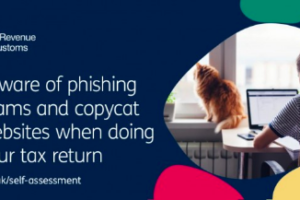Misinformation
Essentially, misinformation is information that is incorrect, in the form of, for example:
- A social media post or direct message.
- A text or email.
- A web page or entire website.
- A document or file which is shared by any means.
Very frequently, misinformation is innocently shared by people without realising that it is incorrect or misleading, or even harmful. This is how misinformation goes viral in a very short space of time, with a variety of consequences. However, incorrect information shared in the knowledge that it isn’t quite or entirely true is known as disinformation.
Fake news
In this era of relatively ungoverned social media, a multitude of online news channels and sponsored stories, exposure to fake news has become an everyday occurrence.
The two categories of fake news
- Untrue stories which are intentionally published to influence your thoughts and decisions, visit particular websites (which could be fraudulent, or feature content you would not normally wish to see), make you believe something false or buy certain products or services.
- Stories which are only partially true, such as reporting a factual event but misreporting some of the circumstances or facts around it, such as motives and quotes. This type of fake news is designed to spread the ideologies and views of the individual or organisation originating it, influencing its readers.
Alternatively, some fake news originates purely through urban myths or simply messages changing as they pass from person to person. And because many people tend not to check the source of online content before they share it, like misinformation or disinformation, it can go viral very quickly.
Some people also deliberately claim that factually accurate news is actually fake news, because they either do not agree with it, or dislike it.
How to differentiate between real and fake news
- Ask yourself if this would actually happen. Approach what you read or hear rationally, questioning why it would have been written, whether it is attempting to change your viewpoint, sell you something, redirect you to another website or simply shock you.
- Is anybody else reporting the same story? Check to see if reputable, widely-respected newsfeeds and websites have also covered the news you have seen.
- Research the source. Find out more about the publisher, for example whether it is a reputed, normally reliable source or the personal blog of an individual. See if you can find unbiased reviews of the source.
- Check facts. Authentic news is often backed up by official data, surveys and previous, similar instances of the occurrence being reported. Often, it is quite clear that the news is anecdotal, or simply fabricated.
- Check images. Photos or illustrations accompanying fake news are often retouched to reinforce the story, and often this is not done very well. Also, perform a Google reverse image search to see if the image has been stolen from another source.
- Use your instincts. Remember that if something sounds too strange, unreal or weird to be true, it often is.













































